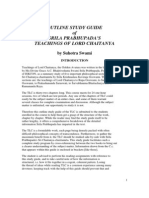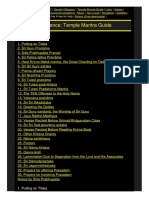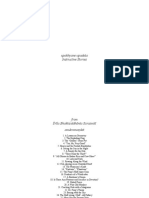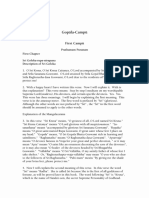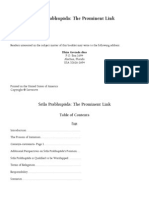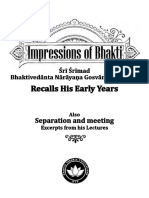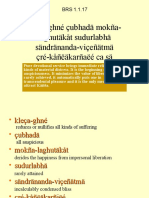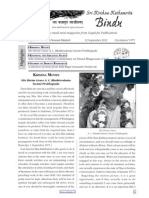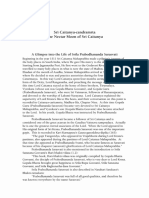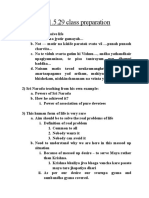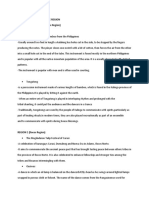0% found this document useful (0 votes)
240 views24 pagesRSD NOI Verse 5.4
- A topmost devotee is one who is expert in logic, scriptural understanding, and has firm conviction and deep faith in Krishna.
- The most advanced devotee sees Krishna within everything systematically and understands everything is situated within the Lord.
- A pure devotee like Prahlada Maharaja, even when questioned by a demon like Hiranyakashipu, maintains the spiritual vision of seeing Krishna everywhere.
Uploaded by
Abhilash RudraCopyright
© © All Rights Reserved
We take content rights seriously. If you suspect this is your content, claim it here.
Available Formats
Download as PPTX, PDF, TXT or read online on Scribd
0% found this document useful (0 votes)
240 views24 pagesRSD NOI Verse 5.4
- A topmost devotee is one who is expert in logic, scriptural understanding, and has firm conviction and deep faith in Krishna.
- The most advanced devotee sees Krishna within everything systematically and understands everything is situated within the Lord.
- A pure devotee like Prahlada Maharaja, even when questioned by a demon like Hiranyakashipu, maintains the spiritual vision of seeing Krishna everywhere.
Uploaded by
Abhilash RudraCopyright
© © All Rights Reserved
We take content rights seriously. If you suspect this is your content, claim it here.
Available Formats
Download as PPTX, PDF, TXT or read online on Scribd
/ 24

